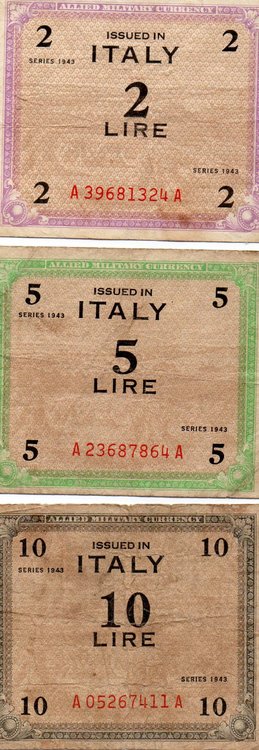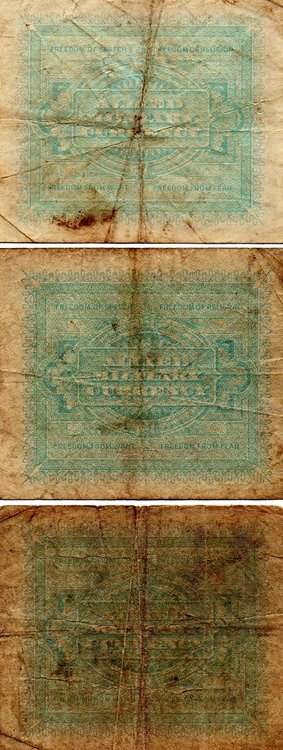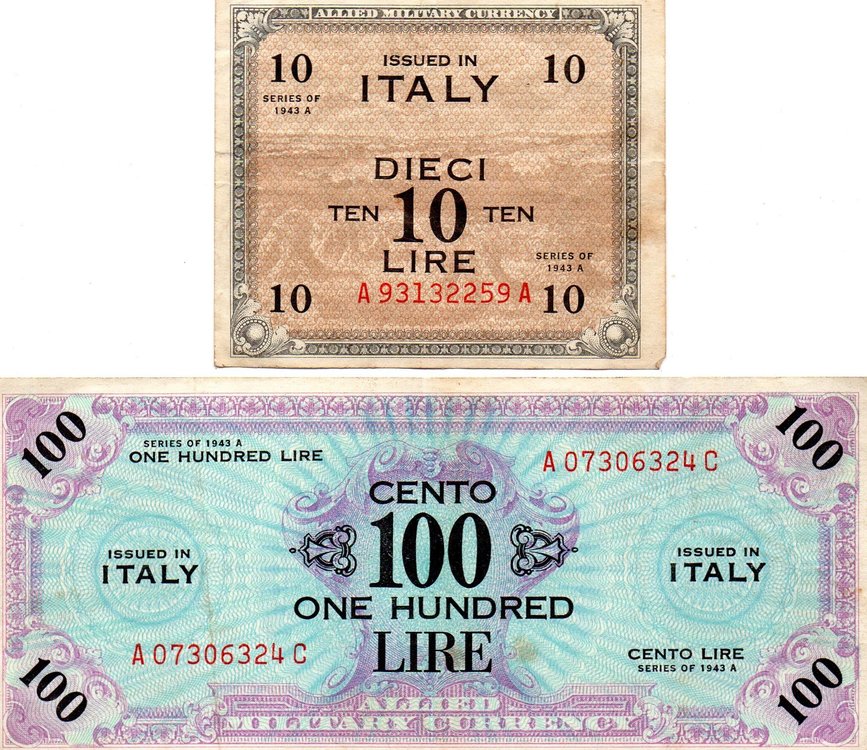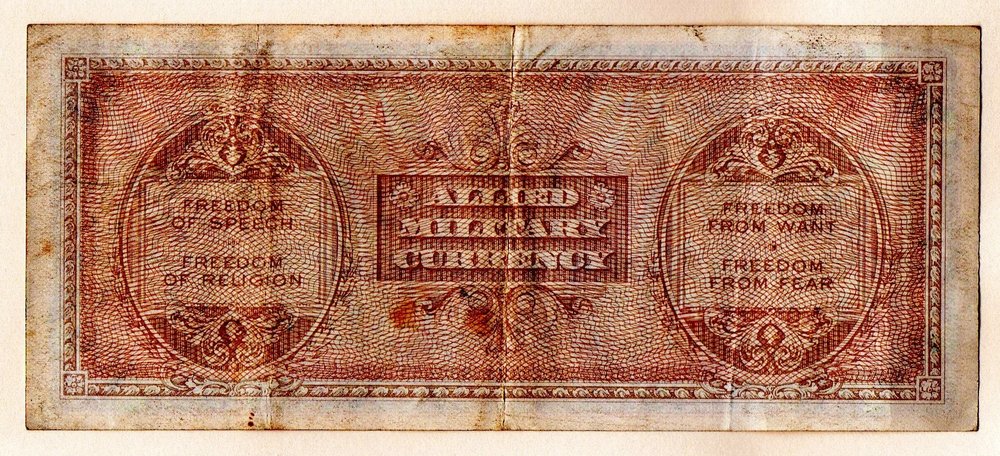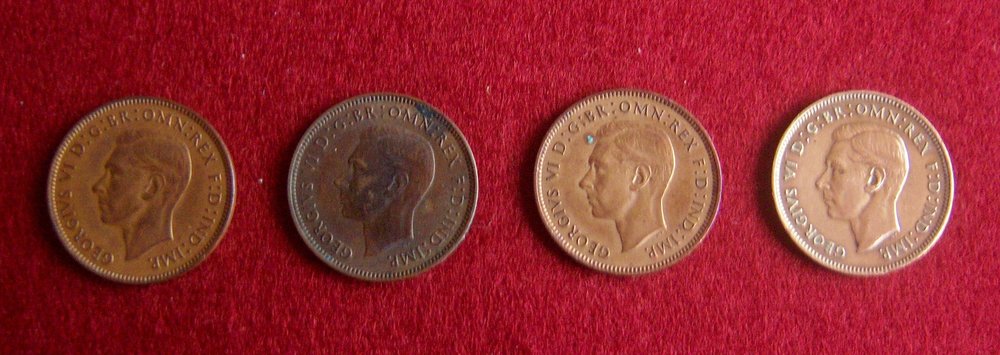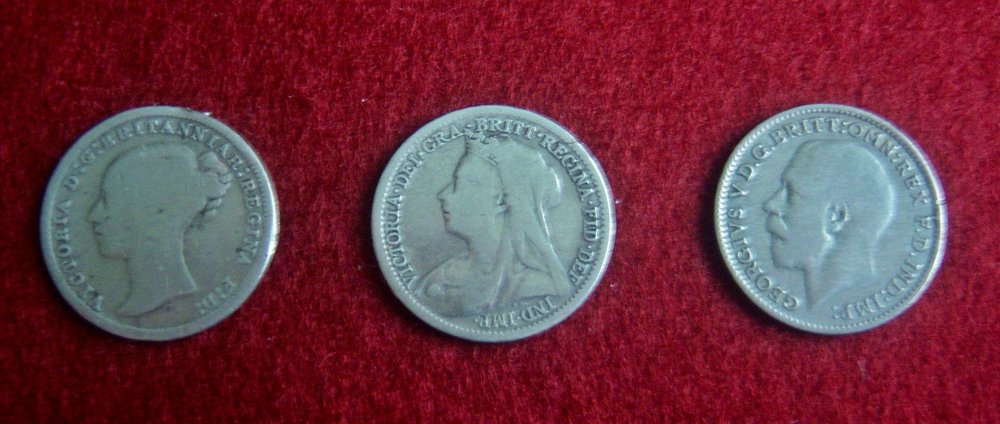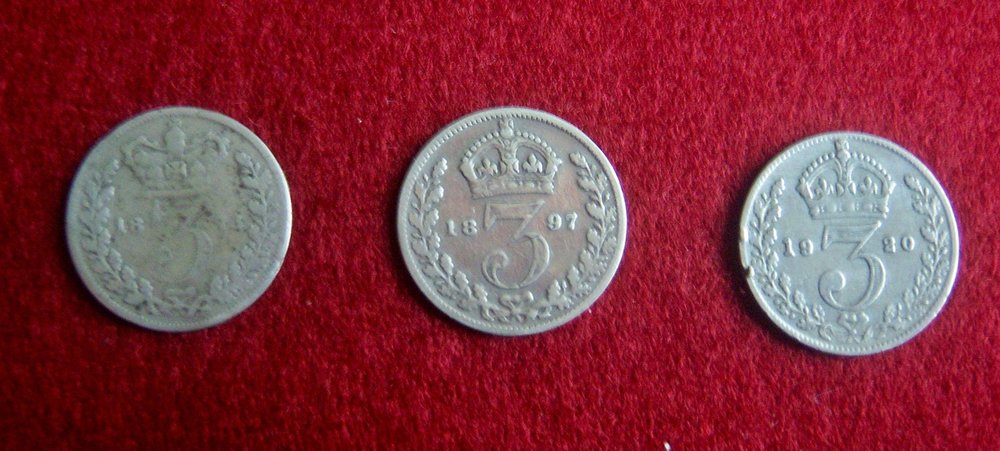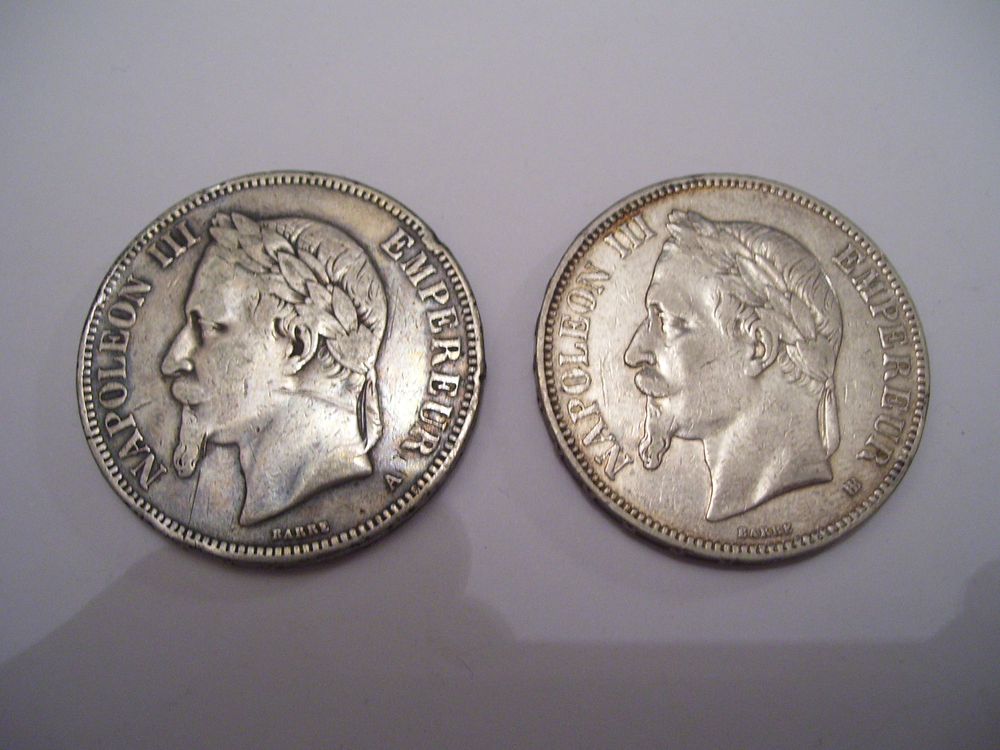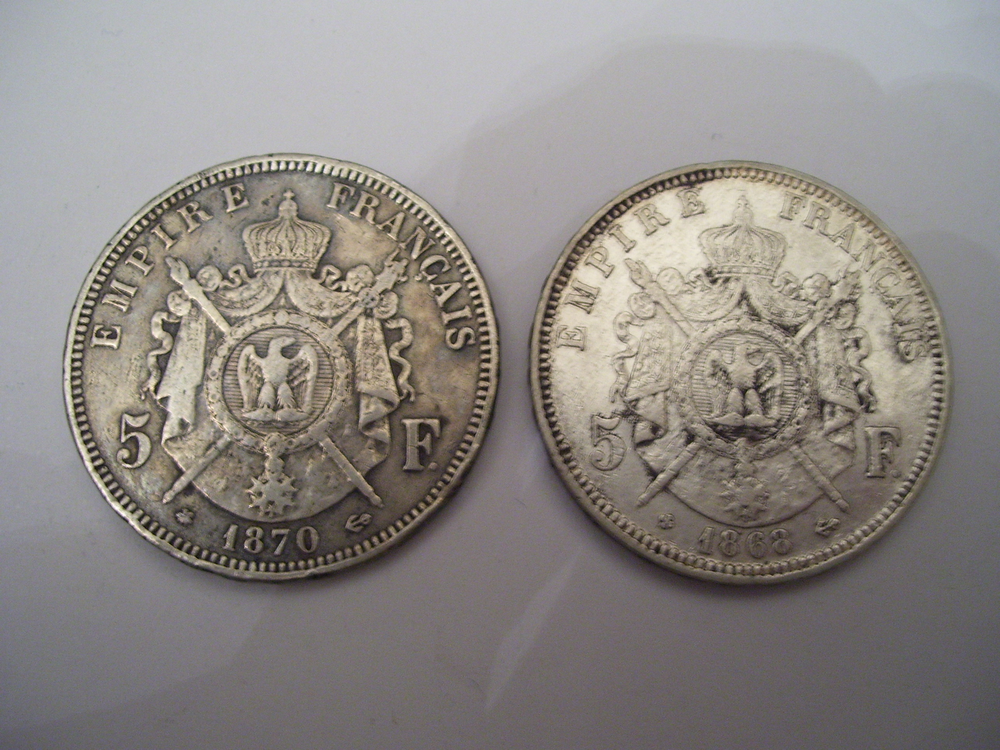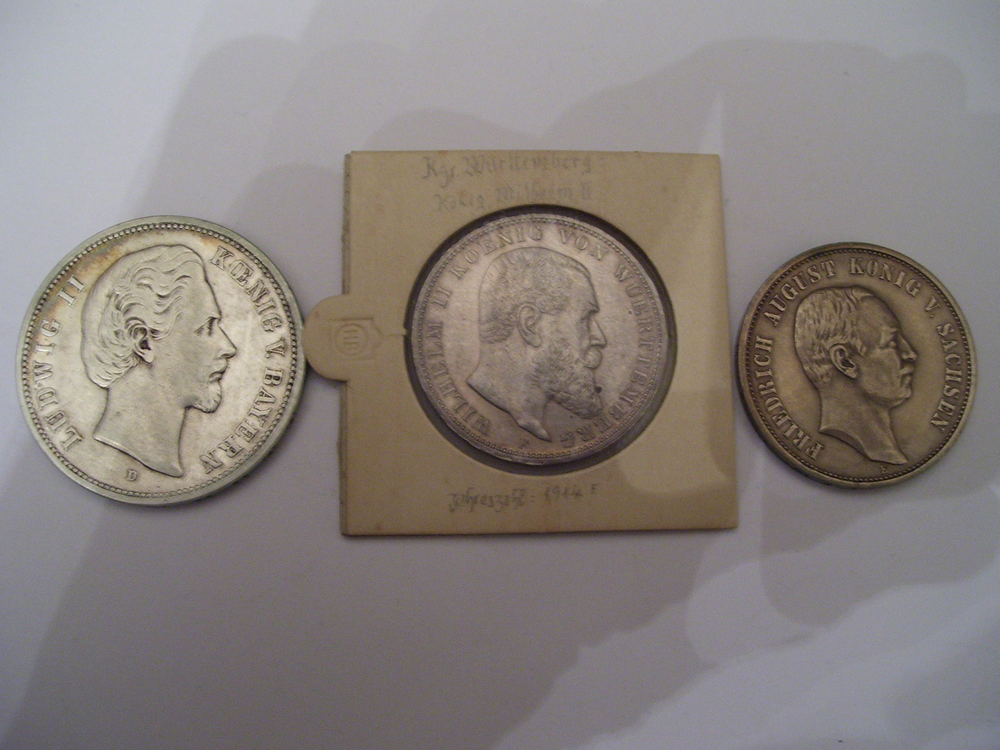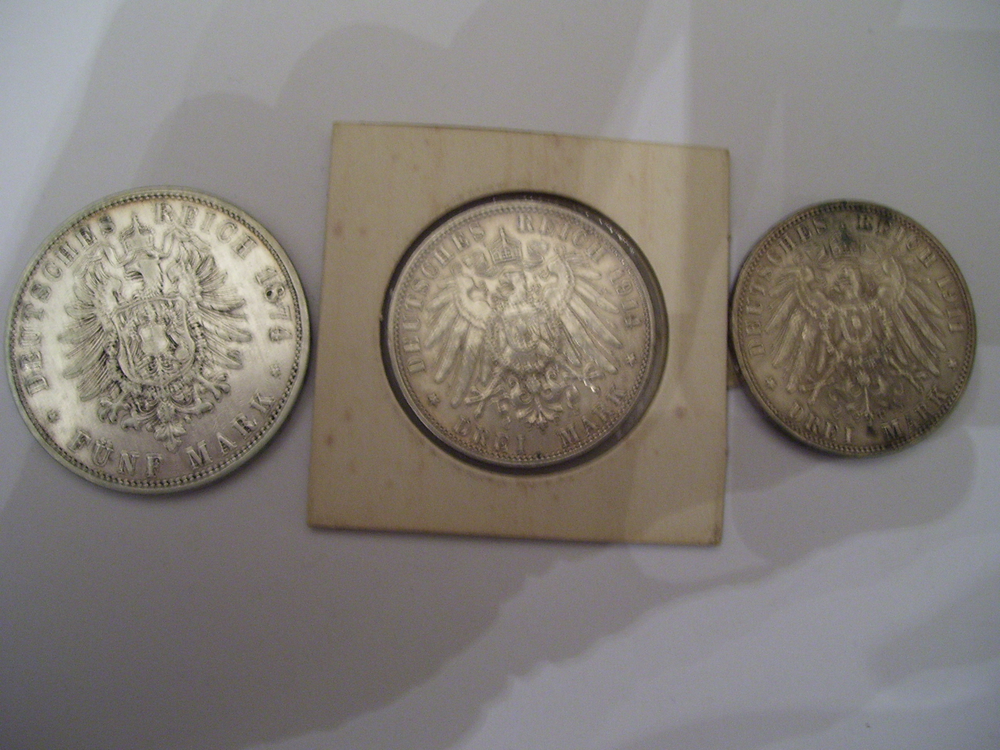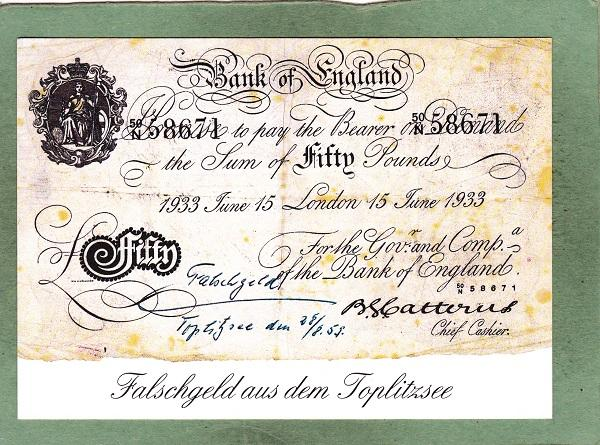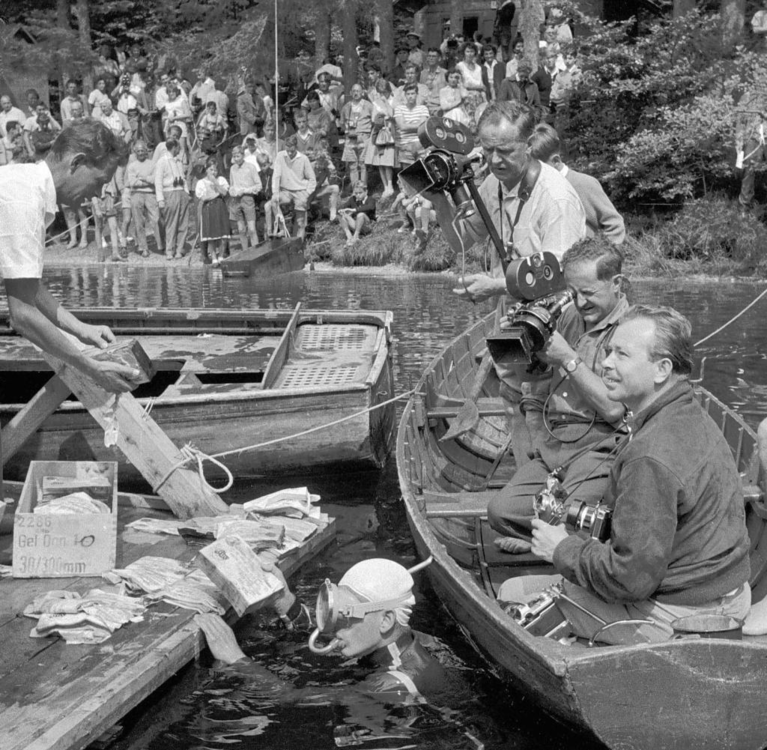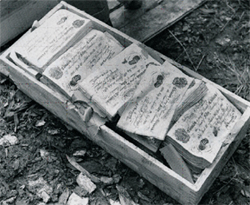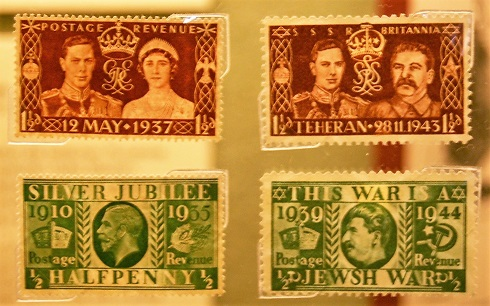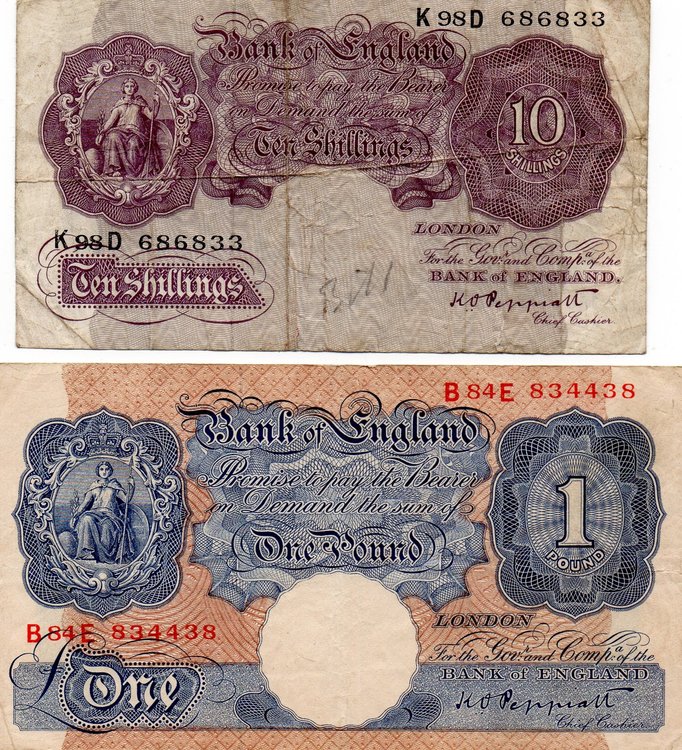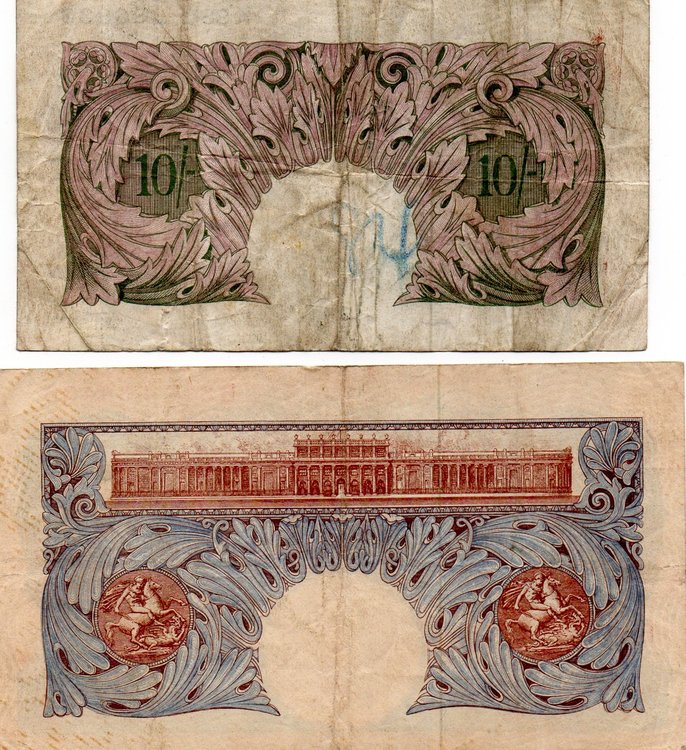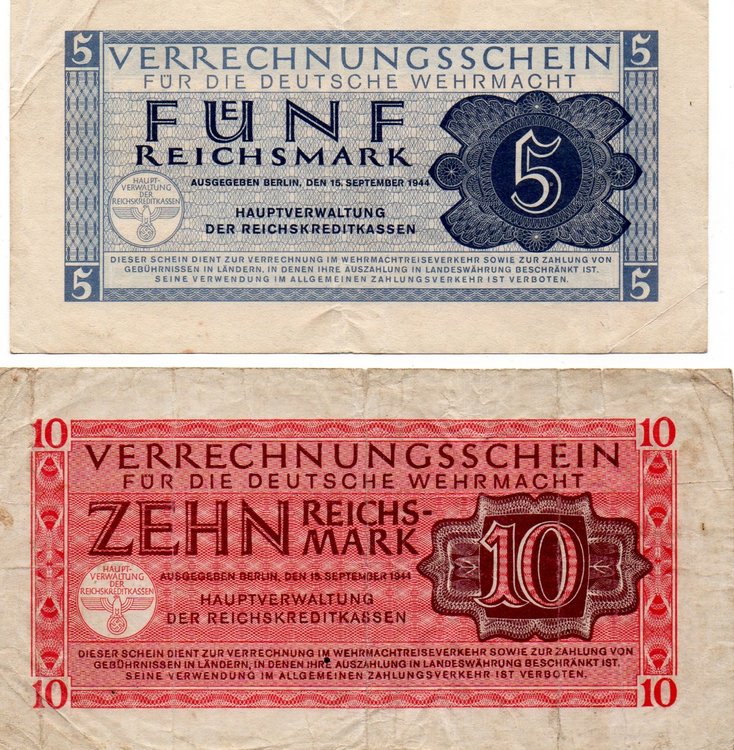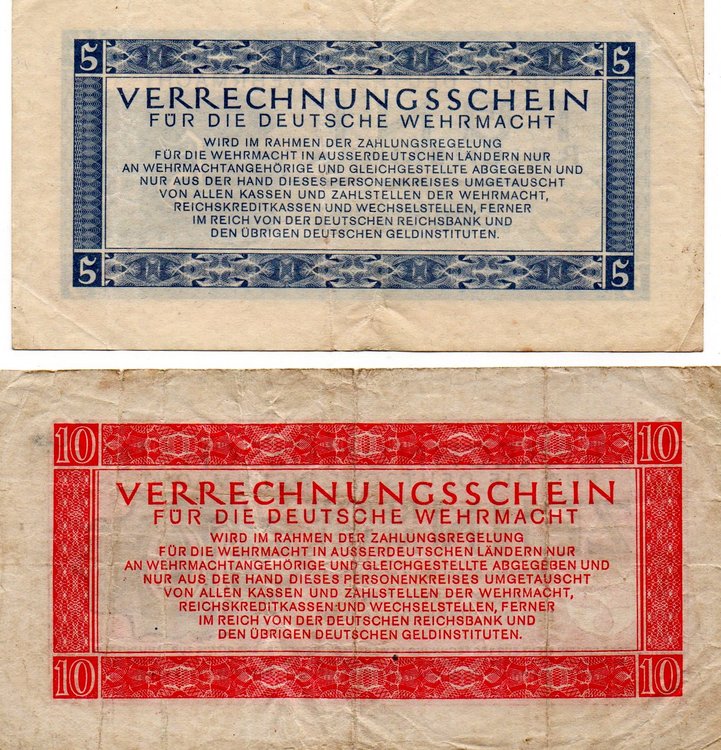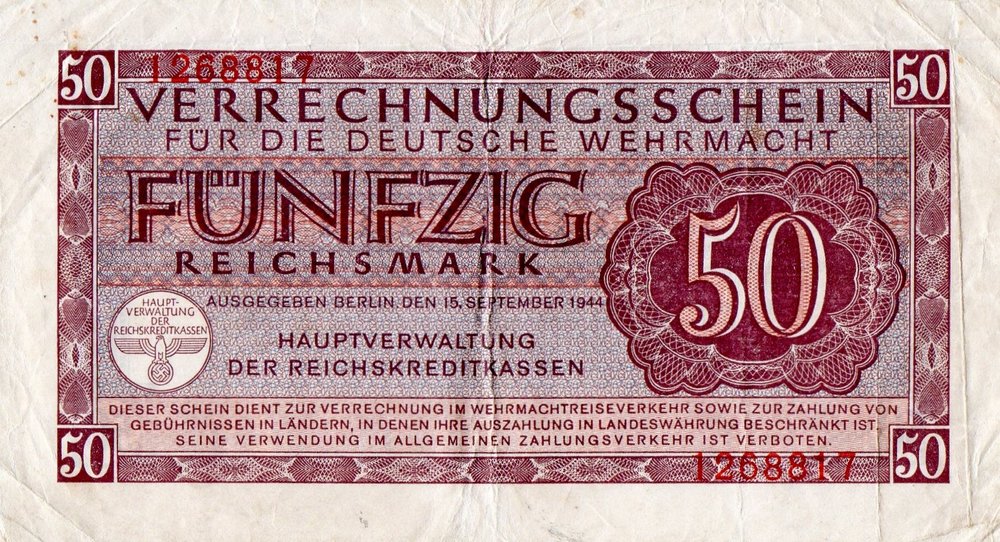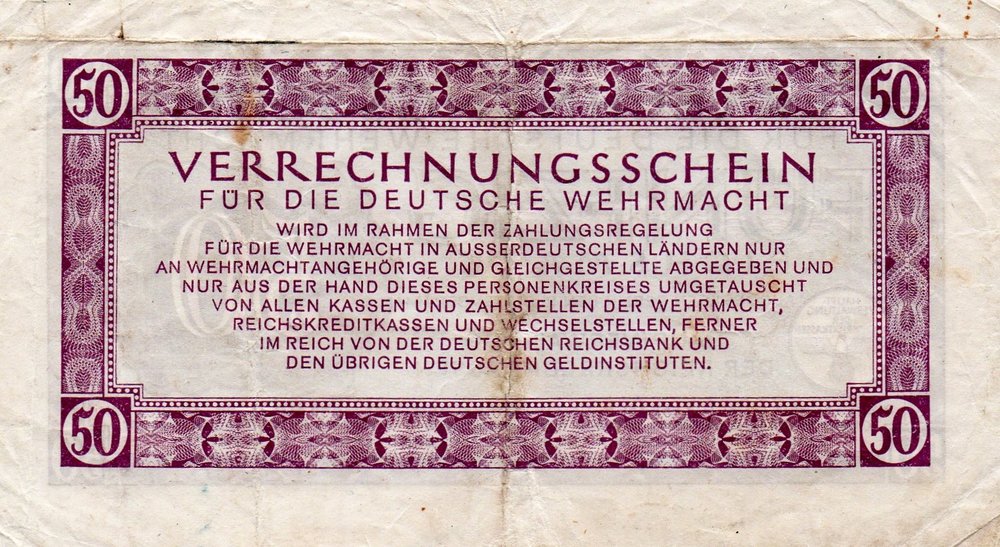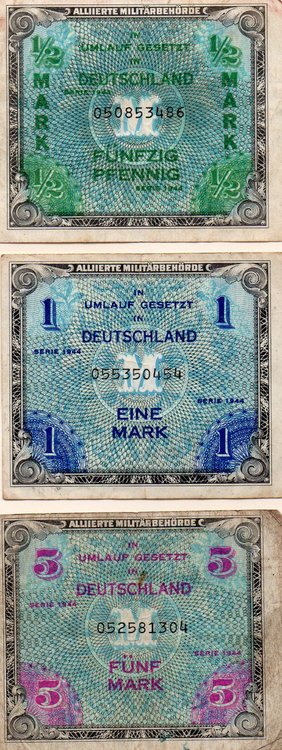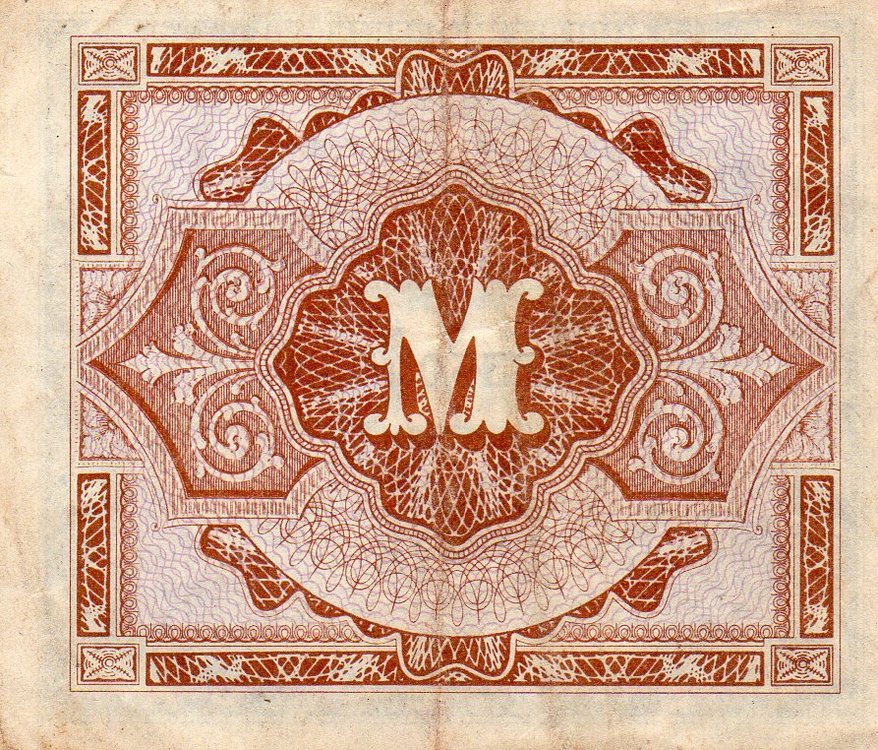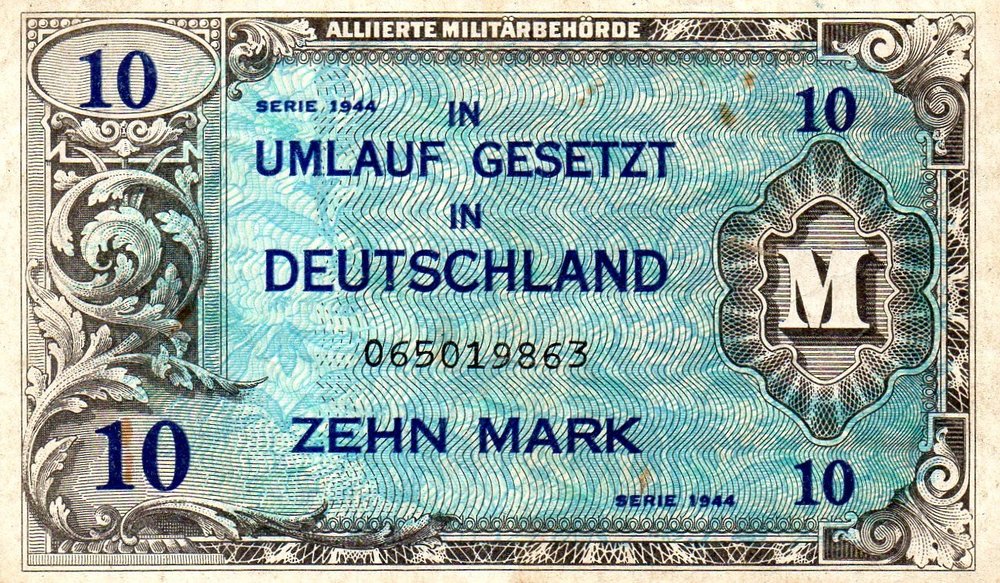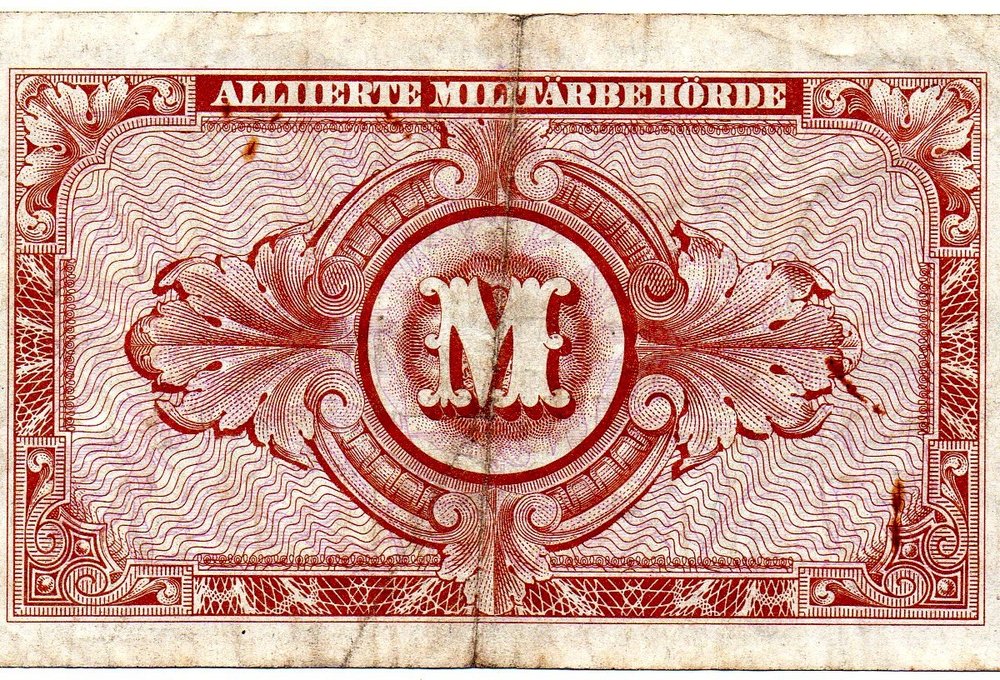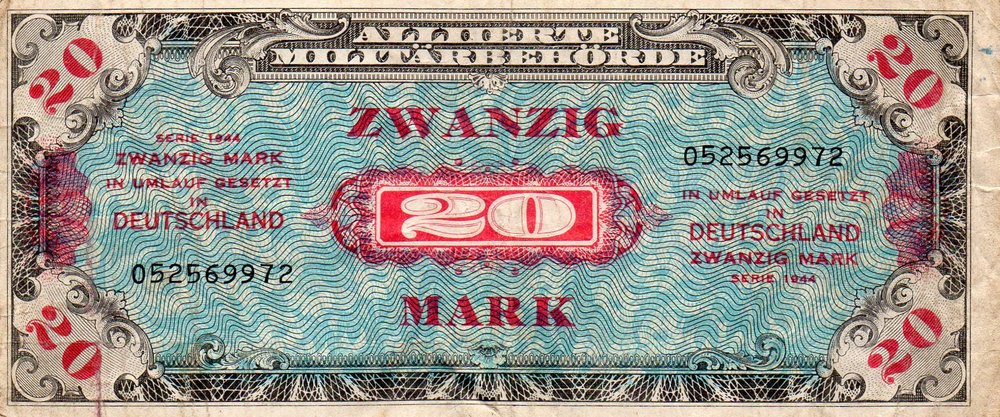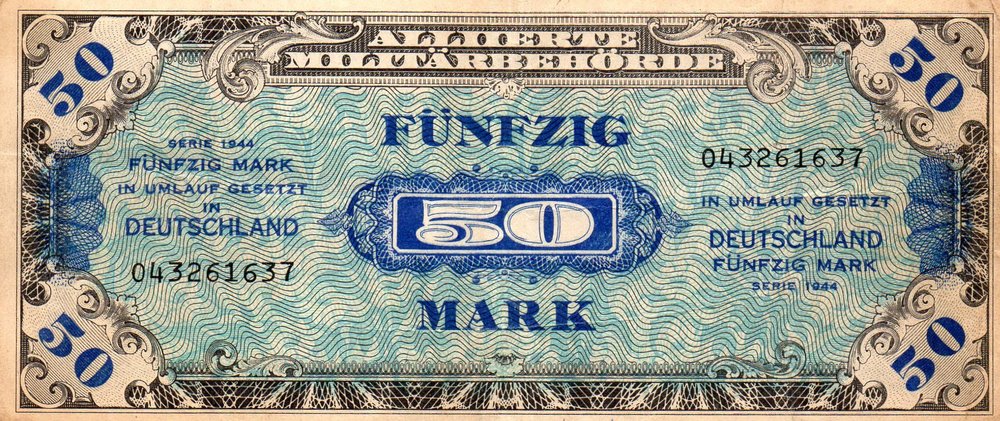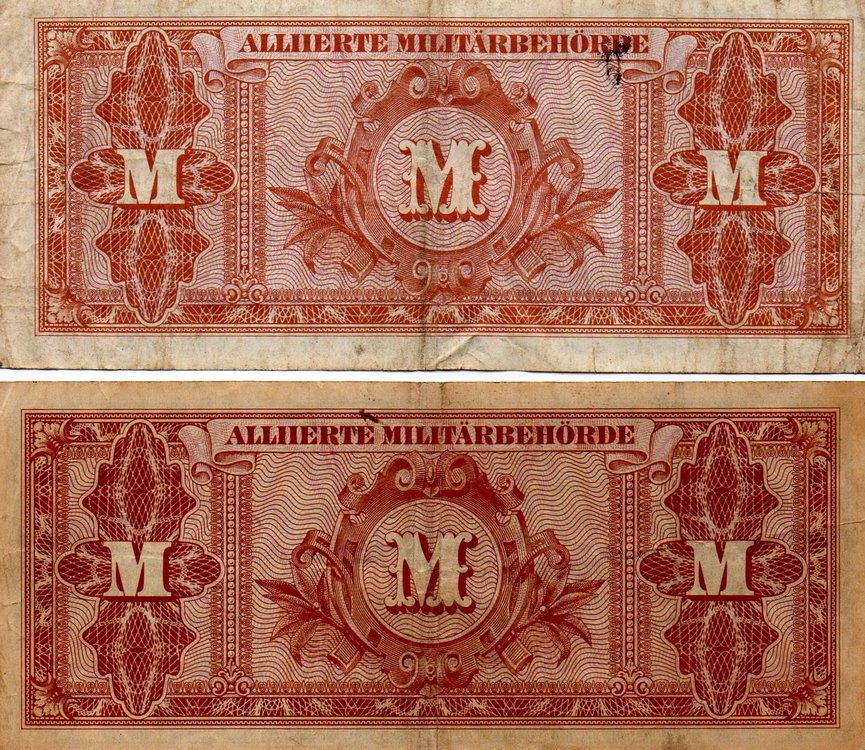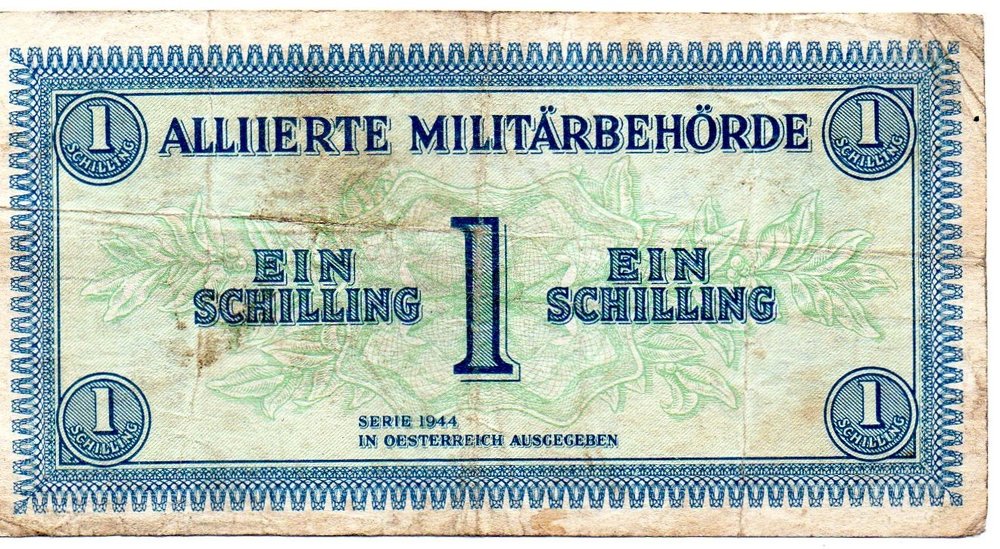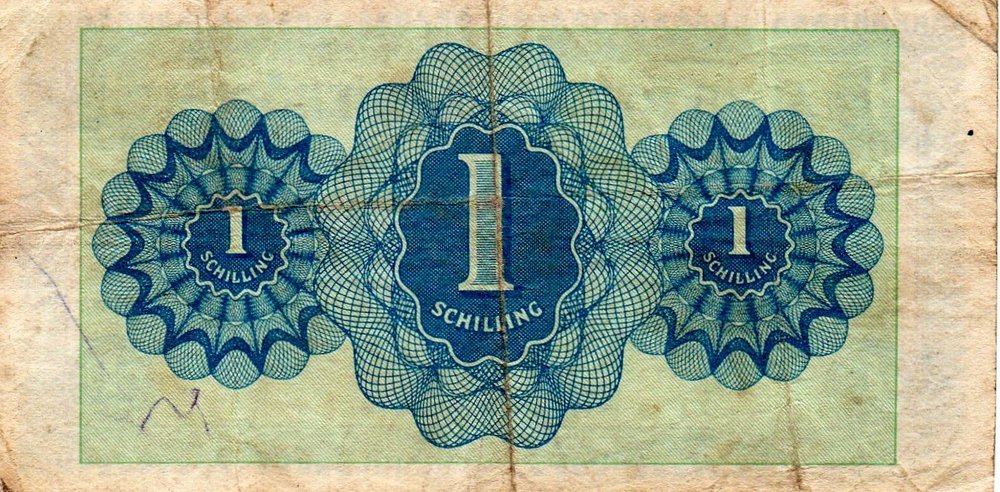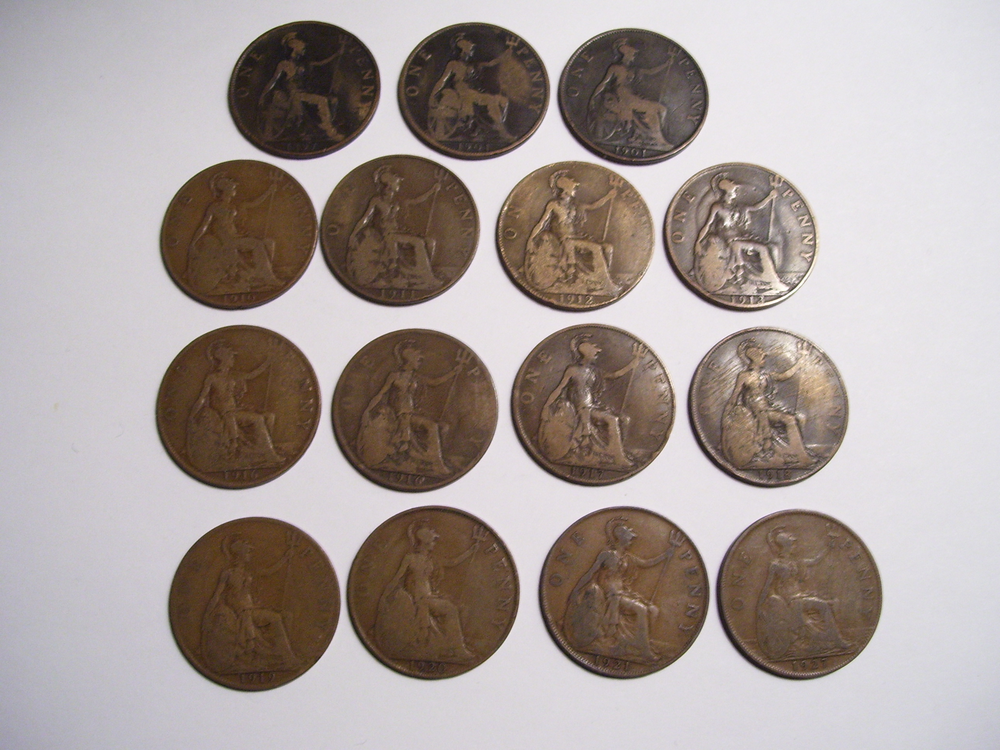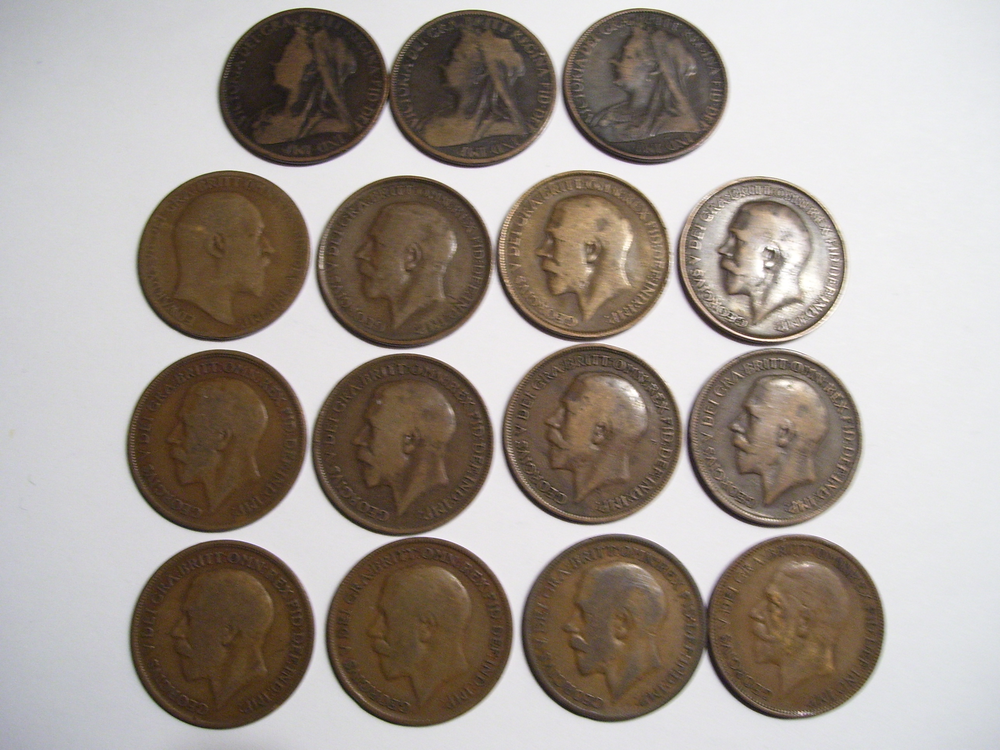Leaderboard
Popular Content
Showing content with the highest reputation on 10/01/19 in all areas
-
xx DDR coins, averse and reverse: Mark and Pfennige: From the 1960s and early 1970s 2 Mark, 50 Pfennige, 20 Pfennige, 10 Pfennige (Groschen), 5 Pfennige and 1 Pfennig pieces. All are of Aluminium with the exception of the 20 Pf. pieces. DDR Coins, averse and reverse: 10 Mark piece, Buchenwald Commemoration 1972, 5 Mark Commemoration 20 Years DDR, 1969 5 Mark, Brandenburger Tor, 1971, Silver, 1 Mark piece 1971, 20 Pfennige, 10 Pfennige, 5 Pfennige and 1 Pfennig. All aluminium, Buchenwald is nickel, 25 Year commemoration is copper bronze. DDR Banknotes have become very collectable, this was the last series of the mid eighties1 point
-
1 point
-
I have recently cleared out my late Mothers house and have found this selection of ribbons. They were obtained by her father, the late Major James DW Harris and sent to his wife, Mabel who at the time was working for the YWCA in Northern Ireland. The ones with the German and French ribbons appear to be home made, but I seek advice or guidance about them all. I assume they were sent to Mabel during WW2 as Major James wrote 'on active service' on his envelope to her. Any insights into this little collection would be much appreciated. The three 'bottle green' eagle / swastika ones are all attached together (unused??). I literally know nothing about any of the insignia so would love to learn more if possible. I didn't know they existed until a couple of weeks ago... TIA Kiwifi explanation, see texts further down explanation, see texts further down Presumably hand made cockades in the Allied colours, Belgium, England, France, probably made in the last days of the war, either for resistance or for "liberation celebrations" at the end of the war. Kriegsmarine - German Navy, 2 roundels or cockades worn as one below the eagle on the sidecap (so-called overseas cap) Kriegsmarine arm patch (left arm), indicating rank of Maat/Mate (n.c.o.rank) and administration branch, has been removed from a unform top large eagle is a Naval breast eagle (worn on right side) of dark blue naval blouse, below, Naval overseas cap eagle for the fieldgrey land uniform large eagle for naval tunic-blouse 3 naval overseas cap eagles: dark blue for regular navy blue overseas cap (worn above cockade), yellow on dark green for the overseas cap in fieldgrey later yellow on fieldgrey for overseas cap in fieldgrey1 point
-
There were military and naval depots in the region of the French coast, also Paris, Brussels, all ports and main cities in occupied Europe and elsewhere. I even saw these badges in the port of Athens and on Crete about 30 years ago. After these regions fell, they were plundered. Collectors and Museums would certainly be interested.1 point
-
Excellent. Thank you very much. Major Jim was an army man, so I am quite intrigued as to how he accumulated his small collection of naval insignia. Do any of the patches shown have any value? Are they of interest to collectors / museums?? TIA Kiwifi1 point
-
Here are some examples of how the insignia was worn: Field grey overseas cap for naval land uniform, early type till around 1940/41 - early insignia with darkgreen backing. Insignia on the dark blue naval overseas cap A uniform photo of a German sailor shows the breasteagle on the tunic-blouse, as well as several awards for war service I would recommend leaving all items unaltered and not cut - avoid contact with dirt and dust! You have a small fortune on your hands!1 point
-
1 point
-
I would agree the paint looks post war, the helmet may be a private purchase made helmet by one of the unknown manufacturers hence the lack of any marks on helmet and liner. factory finished in black most likely used first by someone in one of the civil defence services.1 point
-
Hi. Just a quick update on the restoration of the helmet. The inside was cleaned up and found that the original colour was black, on the rim where the red gloss paint has been chipped off, you can see again black paint. Still no signs of any manufacturing stamps or personal marks. The headband was bit of a worry as the oilskin had dried out and was very brittle, so care had to be taken when working on this part. When cleaning up the outside you could make out where I.D Marks had been removed from the hat. I would suggest that this was done before painting it red. What I did to the oil skin, was to apply a leather balsam and gently rubbed it in to the material, this had 4 coats of the balsam and is now soft and flexible to be worked on. On checking the cross strips after cleaning them, all I could find was the hat size of 7.1/4. Having checked them all over no manufacturing marks at all, the only part left that hasn't been touched is the shoelace which is broken in two. History. Well it's not been a flower power/CND hat as it was brought from an Army Surplus shop, the only reason I picked this hat was because it was red. Taking in all the advice from other experts and range of suggestions and I leave to you to see what thoughts the forum have. 1. Royal Navy hat as they had black hats and painted red as a fire party. 2. Private fire service for factories and businesses. 3. RAF Fire Fighter but they would of had the RAF Blue/Grey colour on the inside or the Red. Colour is Black. 4. Painted Post War in Red as the Cold War/Nuclear threats were starting to cause concerns. It was a Black helmet and was used by Police, Fire Service, Civil Defence, etc. Would it have been sent back to the stores as no further use after the war, until the concerns about a nuclear war. Due to the Emergency Planing the helmets could they be reissued to different services, would the Red stand for a Section Leader or the Fire Service. Judging by the way this helmet was painted - a rough job at best as you can see red paint on the headband, on the chin strap and the paint runs. Did they paint this one and then have another 99 left to paint?. To find out what lies underneath you would have to destroy a history to find the history. I feel that option 4 might be correct and I will leave it alone as it is. Happy New Year. Paul Burns.1 point
-
1 point
-
very nice, I used to have nearly everything, mainly pennies and halfpennies, I had all the dates from 1945 down to about 1890 or so, plus a few earlier, were all the best from the daily small change. They now cost considerably more. Sorry I didn't keep them, but they would have weighed a ton all together.1 point
-
1 point
-
1 point
-
1 point
-
1 point
-
1 point
-
Older coins, Prussia One Reichs Thaler, Friedrich II., Berlin, 1783, Silver, average condition as normaly found One Thaler, Friedrich Wihelm III., Berlin, 1802, Silver, average condition as normaly found Prussia, One Thaler, Friedrich Wilhelm III., so-called "Ausbeutethaler", 1836 - Segen des Mansfelder Bergbaues, 14 Thaler = 1 Feine Mark Porträt of the King as more elderly, reigned 1797 - 18401 point
-
x 2 examples of a 5 Franc piece, Napoléon III., Silver, one is dated 1868, the other 1870. To the edge of the coins is the inscription in raised lettering: Dieu protége la France. Not perfect examples, some slight edge knocks and wear, but reasonable. Coins of the German Empire after 1871, the year in which a universal currency was adopted by all member states, the Mark. Bavaria, five Mark piece with the portrait of Ludwig II. The reverse bears the first model Reichsadler and the date 1874. Württemberg, three Mark piece, dated 1914, with the portrait of Wilhelm II. of Württemberg, the reverse bears the new model eagle of 1889 Saxony, three Mark piece with the portrait of Friedrich-August III. of Saxony, dated 1911, this example seems to have a lesser silver content. Below the portrait was usually a letter representing the city of the mint which produced the coin, A being for Berlin, J for Hamburg, D for Munich, E for Dresden, etc. Each state had it's own coins right down to the 2 Mark piece, in all 25 different states. Coins up to one Mark had no differenciation, apart from the letter of their mint. These coins were minted till 1914 or 1915, one Mark pieces till 1916, thereafter, silver began to get scarce and more notes were produced. Coins of lesser denominations were later minted in aluminium, zinc and iron. Prussia, 5 Mark piece, 1876, Wilhelm I., some edge knocks, dark attractive patina Prussia, 2 Mark piece, 1888, Friedrich, used condition Prussia, 5 Mark piece, 1903, new eagle, Wilhelm II., almost uncirculated, bright.1 point
-
Here is a short docu about diving in the Töplitzsee and historical background. Sturmbannführer Bernd Krüger led the project, and even returned to the scene many years later and accompanied a diver to explore the depths of the lake, in a minisubmarine. and another diving expedition....1 point
-
Interesting, then there were also the extremely large banknotes, perhaps earlier, for example, these were also faked during the war, being produced in Sachsenhausen and some other KZs Töplitzsee, Salzkammergut, in the postwar years many faked notes were recovered. Some of these landed on the collectors market and auctions in the 1980s and 90s, as far as I remember. Quite a sensation at the time, they were hoping to find gold. No gold was ever found, just an otherwise empty safe with some of these notes. As well as notes, postage stamps were also faked, as in these examples.1 point
-
1 point
-
Here are some Wehrmacht Military Currency notes issued in September 1944, they were used to pay troops during the final months of ww2. Soldiers were paid these while in transit when the soldier arrived at his post the notes could be converted to local currency or occupation currency notes. The back of the notes includes regulations and instructions on how to use them.1 point
-
Haven't seen these before. The ones I have, I only got by chance. They were given to me by a friend, whose father they belonged to.1 point
-
1 point
-
1 point
-
2 Shillings and 6 Pence, issue by British Military Authorities, undated wartime issue, probably 1945 Allied Military Authorities, series 1944, issue for Austria (former Ostmark) 2 Schillinge and 5 Schillinge, valid only for Austria, which had been separated from the rest of the Reich after the Allied occupation. N.B.: A reunification with the rest of Germany is still officially prohibited by Allied Law! Collected in Austria by a member of the 8th Army, Sergeant Carter from Chingford/Essex, who had served in North Africa and Italy, and was decorated with the Military Medal and the French Medaille Militaire. Some of the other notes are also from his estate.1 point
-
1 point
-
1 point
-
1 point
-
1 point
-
x Great Britain, 10 Shilling note, last issue before 1971 Hong Kong, Crown Colony, Elizabeth II., 1 HK Dollar. France, 10 Franc note, late 1960s - early 1970s. With portrait of Voltaire. France, 50 centimes, local currency, Région Provencale, possibly war or emergency issue, valid till 31.12.1922, from my father.1 point
-
France, Coins from 1792 till 1957 2 Sous 1793, Year 4 of the Revolution, Louis XVI. (still King), damaged and aged. 5 Centimes, Republic, year, 8 (1796) 5 Francs 1849, 2nd Republic, Silver 10 Centimes, 1855 and 1856, Napoléon III., Empereur, copper 2 copper 10 centimes pieces, copper, 3rd Republic 1902 and a further example with solder remains, date illegible, 5 centimes 1914, copper, 2 centimes 1897 1 Franc 1940, 3rd Republic, brass 3 examples of 2 Franc pieces, État Francais (Vichy), 1943, aluminium 4th Republic, 20 Francs, 1951 and 1952 (anciens francs), brass 10 Francs 1952, brass (anciens francs), 1 Franc 1957, aluminium1 point
-
xx Great Britain, Penny pieces, copper, from 1897 till 1927: Victoria Edward VII. George V., also some WW1 dates, 1916, 1917, 1918 All circulated and with wear. Were still in use till "Decimalisation" and the "New Pence" in 1971. Two very old copper pennies, one is dated 1807, George IV., the other date unclear, possibly George III. Six Pence, 1945, George VI., nickel, brilliant, uncirculated condition.1 point





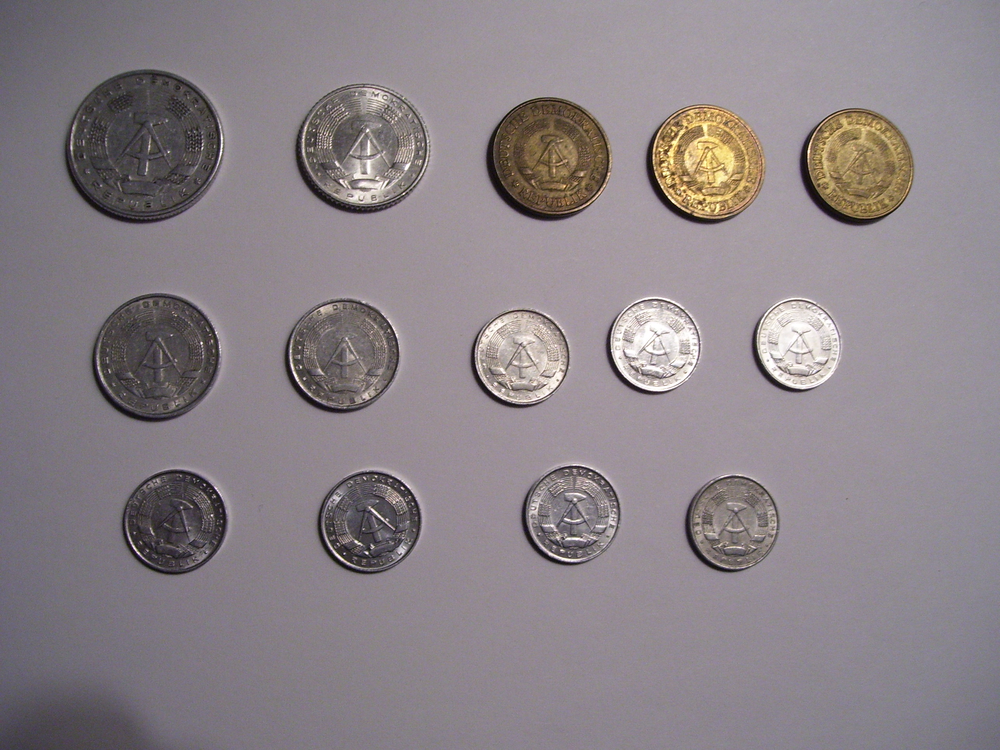
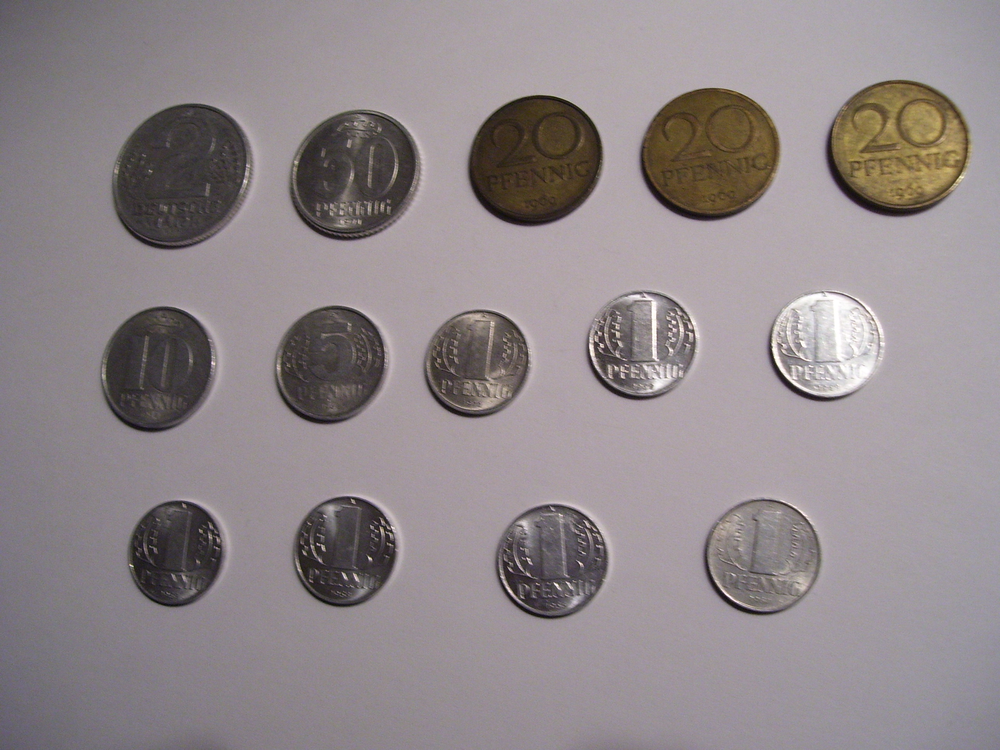
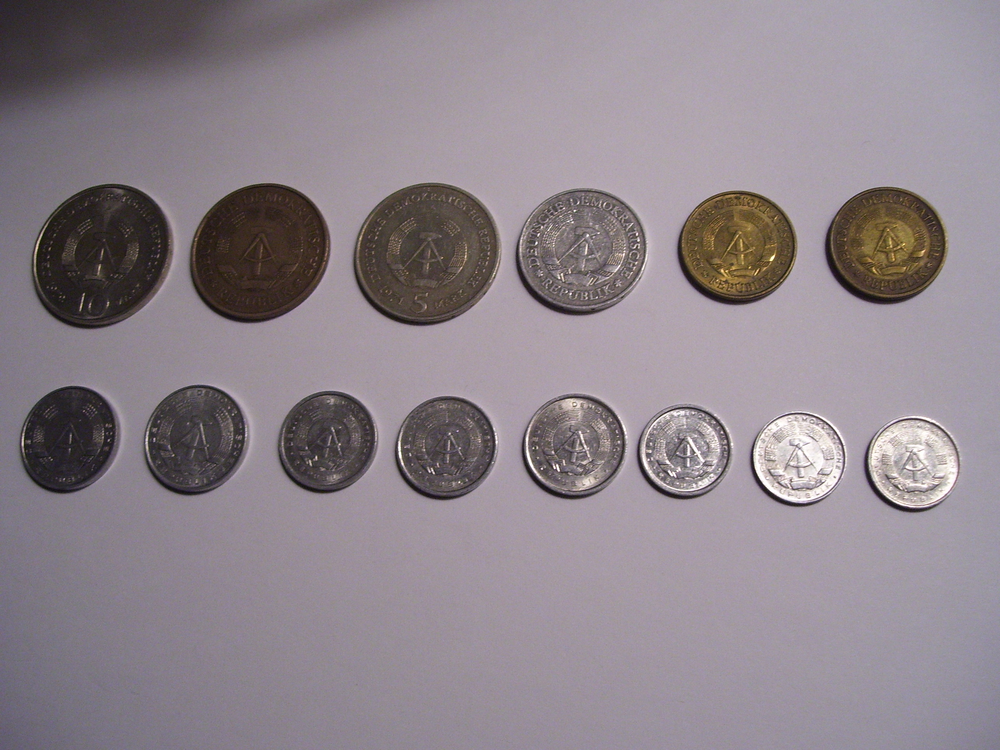
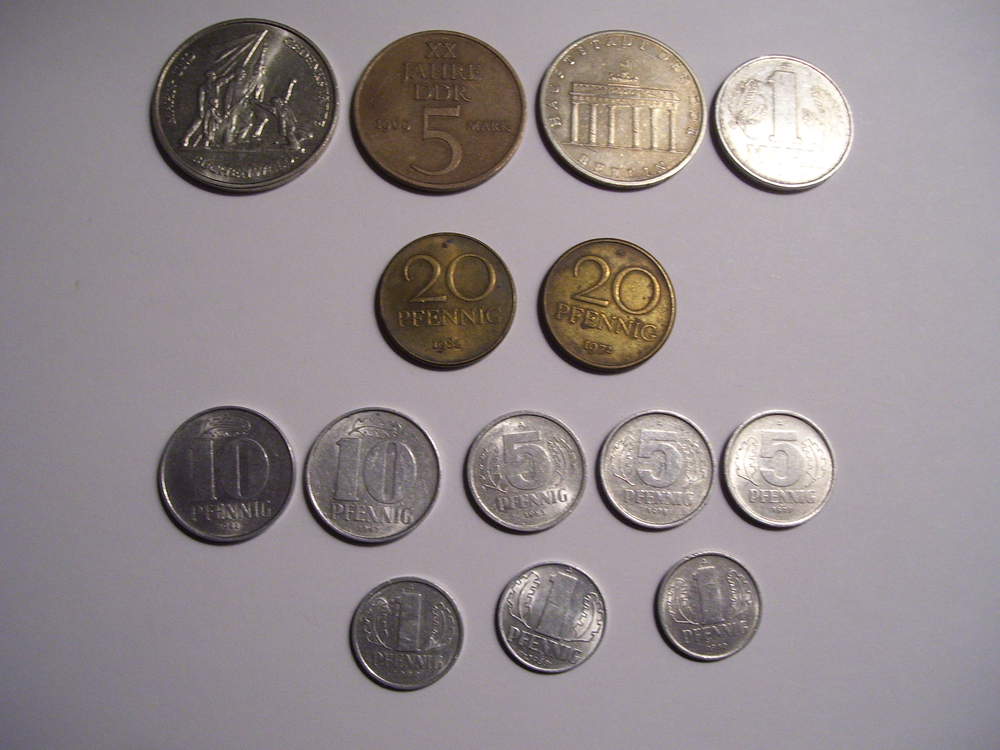
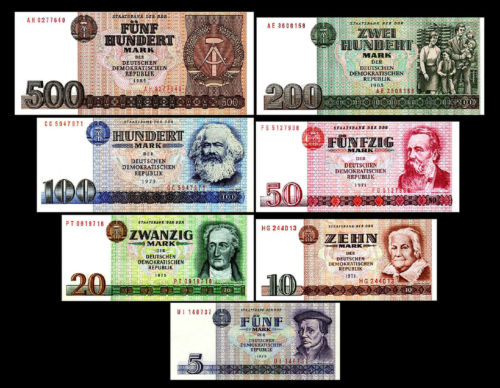
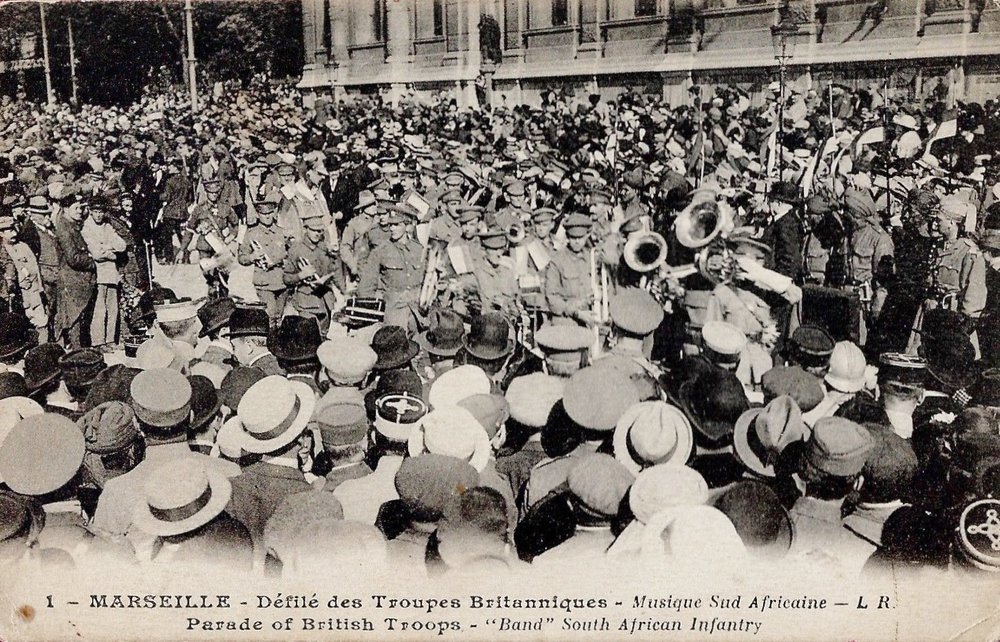
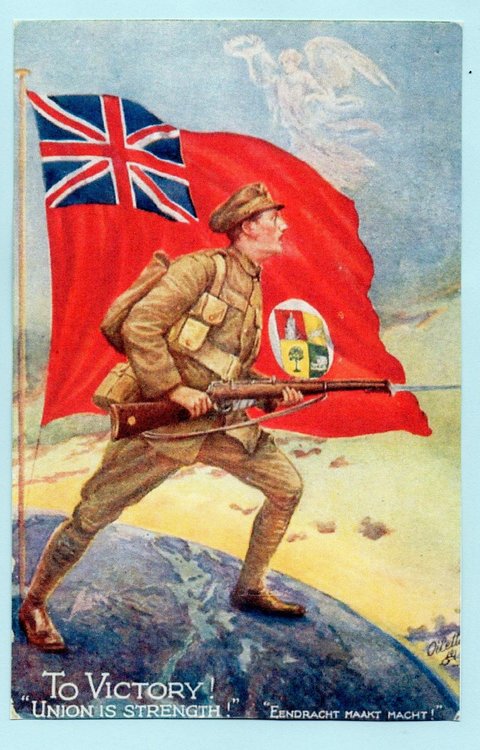
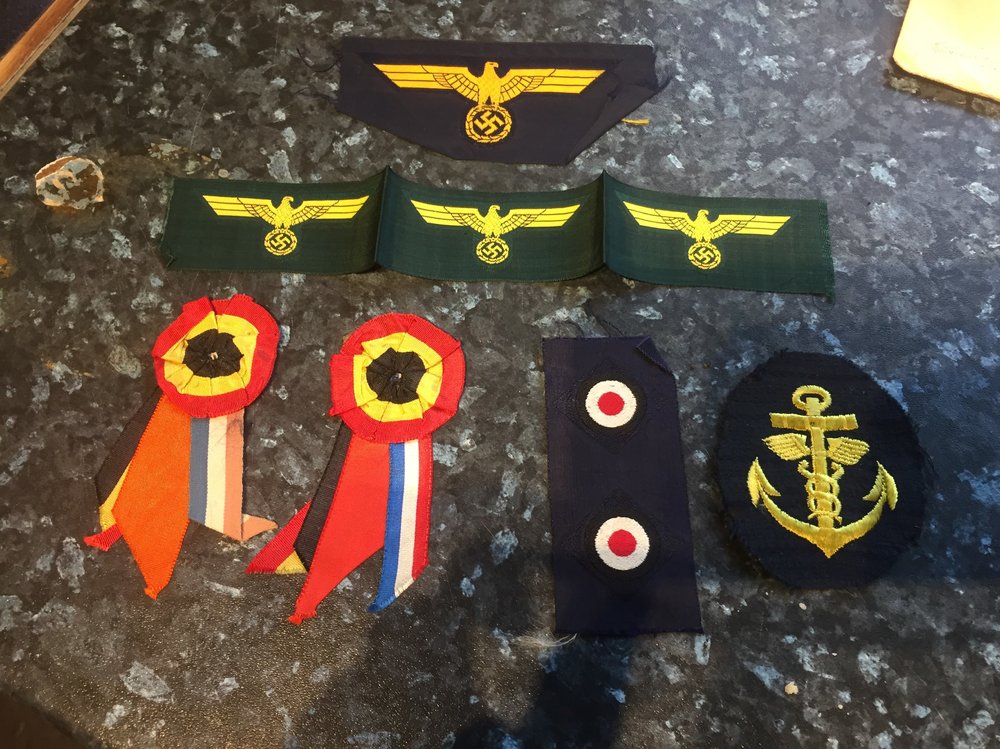

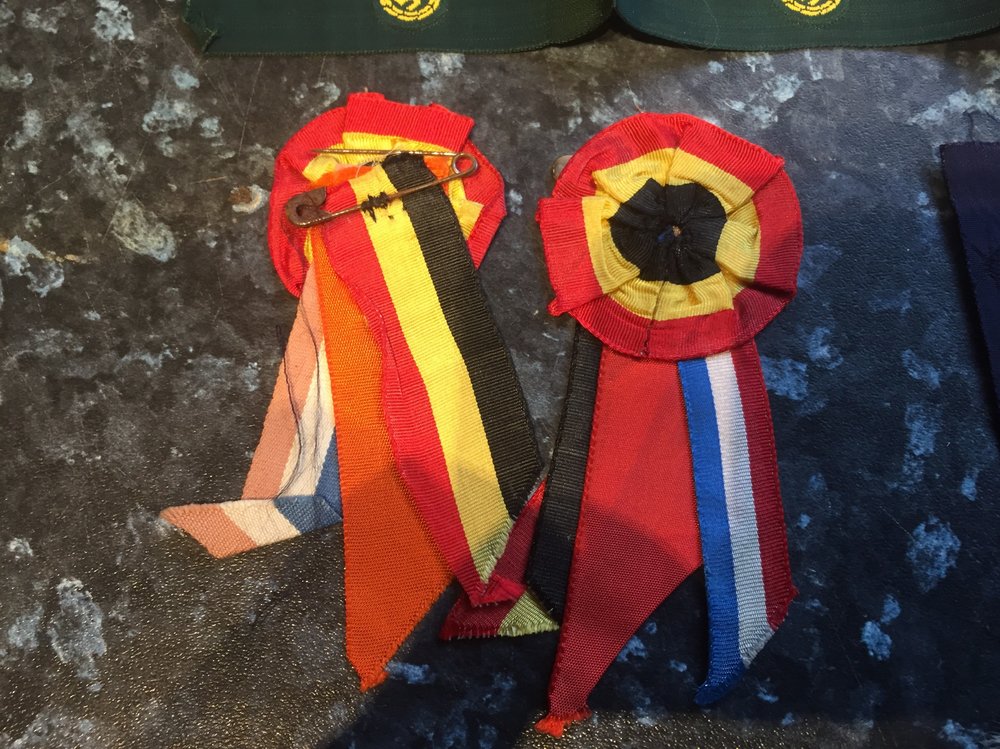
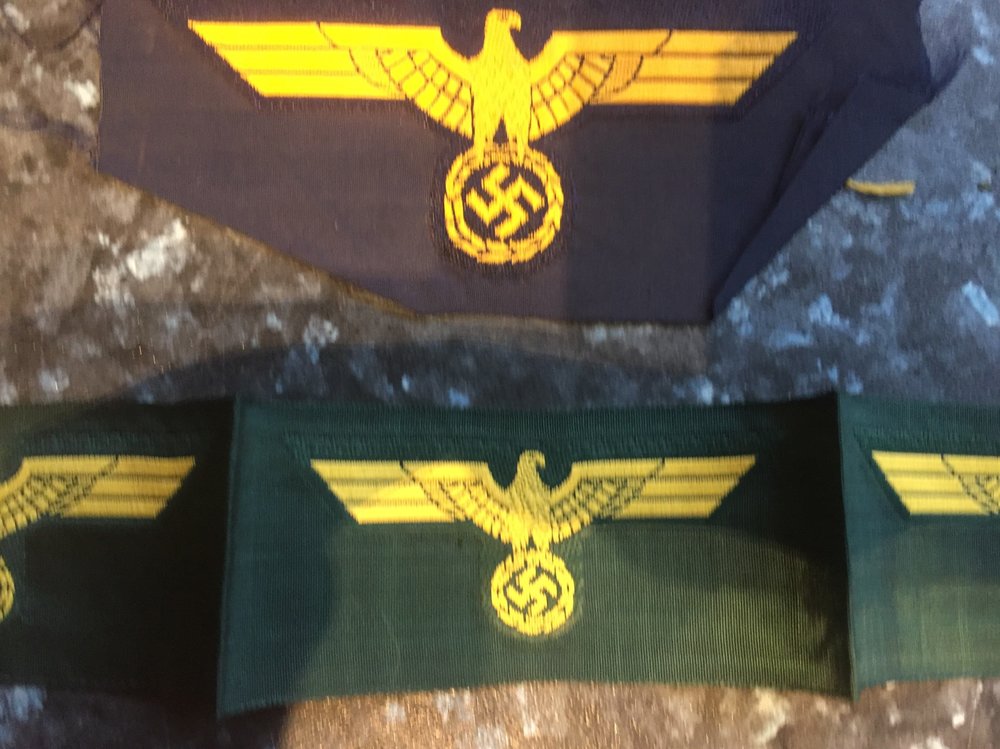
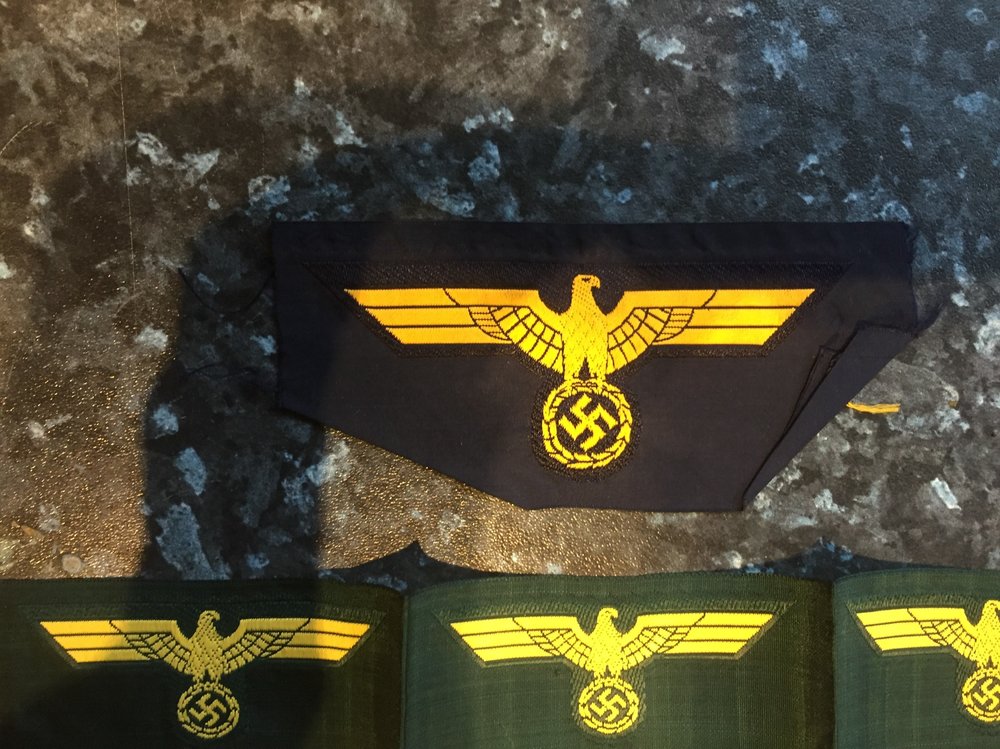
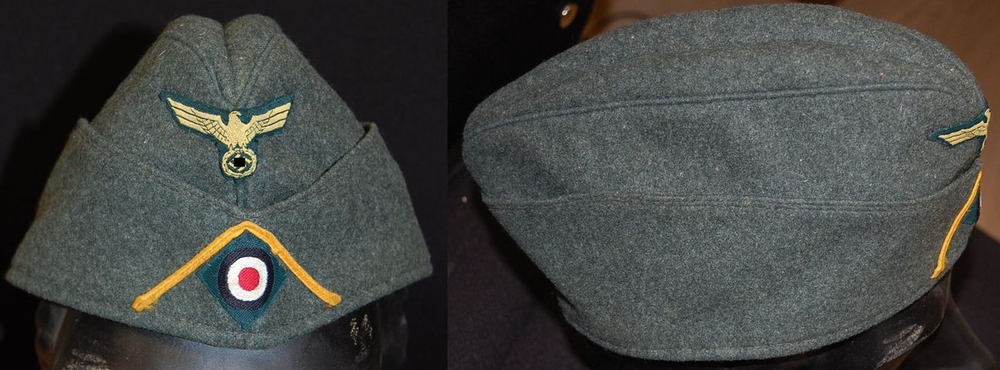
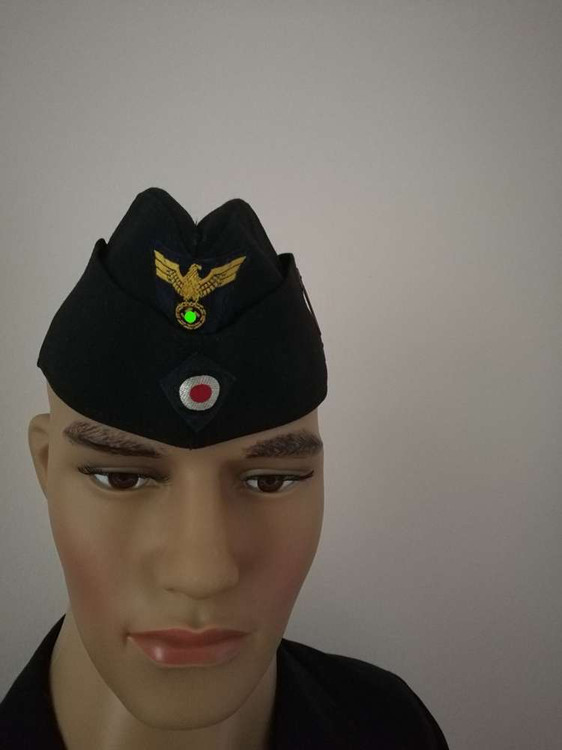
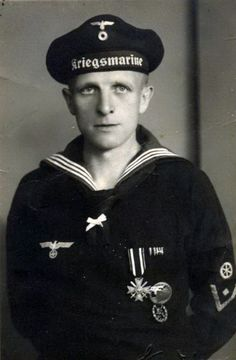
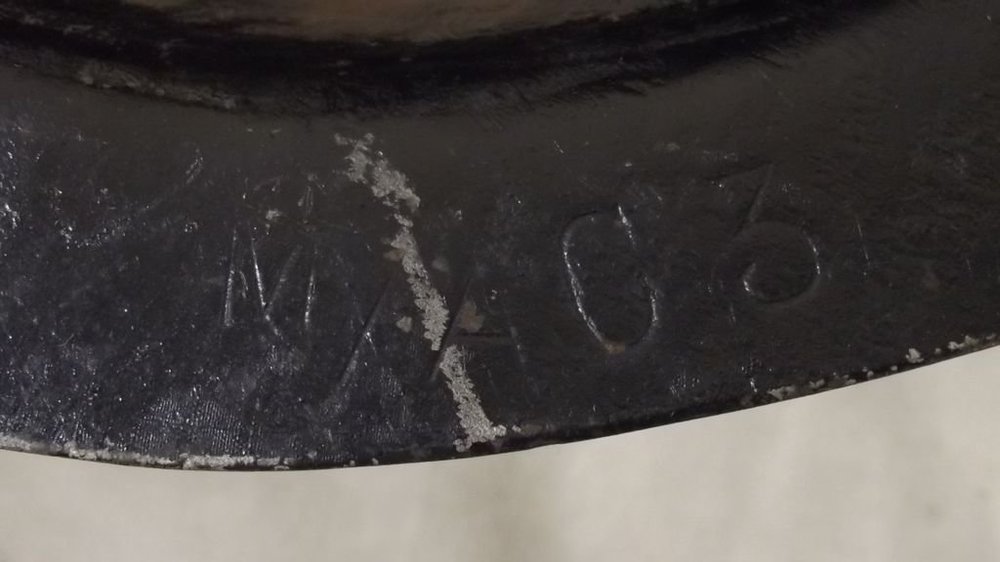
.thumb.jpg.eaa69d2a3c3ded8a702a5f94498345a9.jpg)
